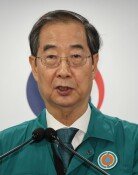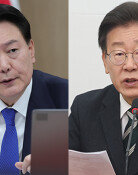Party-government-presidential office meeting
Party-government-presidential office meeting
Posted July. 23, 2015 07:16,
The ruling Saenuri Party, the government and the presidential office held a high-level party-government-presidential office meeting on Wednesday for the first time in 68 days. Even considering the "Sung Wan-jong List" fiasco, this meeting after a long hiatus clearly indicates how problematic communications between the three sides have been thus far. Wednesdays meeting was expanded to include working-level members of the party-government-presidential office as attendees, which is unusual. Since the prime minister, the partys floor leadership and presidential secretary for political affairs have been replaced, the meeting provided a venue for attendees to greet each other, and vow communications and unity. The three sides held broad-based discussions about pending issues in state administration, including labor reform and the approval of extra budget.
The resumption of the high-level meeting could be the necessary condition to demonstrate the possibility for communication, but not the sufficient condition. Even when disruptions occurred over a hike in the ratio of national pension payment relative to pre-retirement income and revision to the National Assembly Act, which erupted in the course of public pension reform, there existed channels of communication between the party and the presidential office, as well as actual communications. However, as the presidents intention and the intention of the ruling partys leadership were not accurately conveyed to each other, the two sides raised different voices, which ended up aggravating into conflict.
Under the current structure in which a proxy conveys the presidents intention, there will inevitably be limits in communications no matter how many party-government-presidential office meetings are held, and whichever proxy is deployed. Things could be difficult to address even when the president and her aides meet and hold dialogue each other without reservation, but the current presidential office is hardly in such environment. Certain ordinary people even raise the question of whether the presidential chief of staff is allowed to have one-on-one meetings with the president.
It is also questionable whether the presidential chief of staff is eligible to attend the meeting on behalf of the presidential office. The presidential chief of staff is only an aide to the president. The representative of the presidential office, the control center of state administration, should be naturally the president herself without doubt. Has anyone ever heard that the U.S. president or the British prime minister sends their chief of staff to hold a party-government meeting?
Given its nature and the qualification of its members, the high-level party-government-presidential office meeting should naturally be attended and presided over by the president. If the basic direction of state administration is discussed at this meeting, while specific policies and implementation strategies are discussed at working-level party-government-presidential office meetings, the three sides will move as if they are a single body, and can significantly elevate momentum for implementation. If so, controversy over communications between the three sides will disappear, while the public, who sees the president as the symbol of non-communications, will change their perception towards her.







